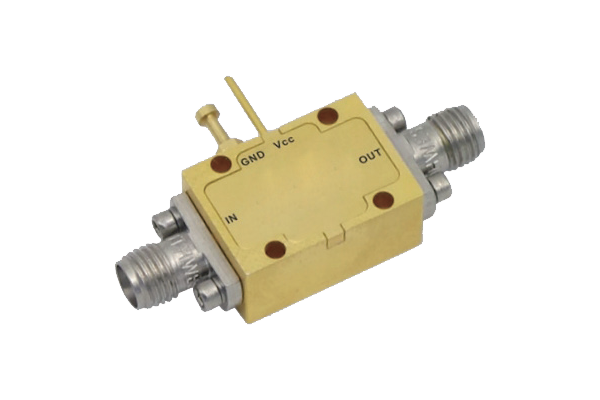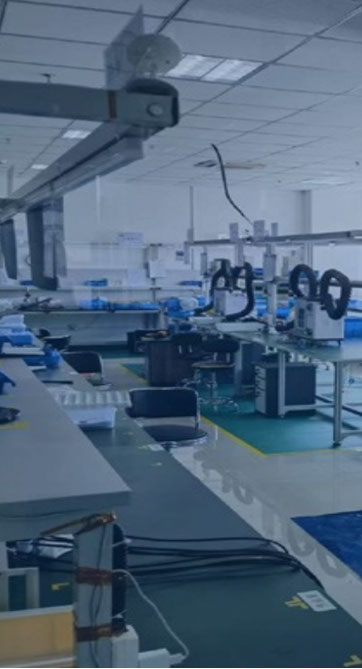
PIN diodes have evolved into key components for microwave and RF applications due to their built-in device properties Their high-speed switching performance and low capacitance along with negligible insertion loss position them well for switch modulator and attenuator implementations. The operative principle for PIN diode switching centers on bias-controlled current modulation. The control voltage varies the depletion region dimensions at the junction and thereby alters conductive behavior. Controlling the bias point makes it possible for PIN diodes to switch at microwave frequencies with low distortion
For applications demanding exact timing and control PIN diodes are typically incorporated into complex circuitry They are useful in RF filtering systems for choosing which frequency bands to pass or suppress. Also their capacity to manage high power signals makes them applicable to amplifiers power dividers and signal generators. Reduced size and improved efficiency of PIN diodes have enhanced their applicability in wireless and radar engineering
Analyzing the Performance of Coaxial Switch Designs
Creating coaxial switches is a challenging task that demands consideration of a variety of technical parameters Key factors such as switch category operating band and insertion loss shape the coaxial switch performance. An efficient coaxial switch should reduce insertion loss while optimizing isolation between ports
Assessment of switch performance typically measures metrics including return loss insertion loss and isolation. Performance figures are derived from simulation modeling theoretical analysis and empirical testing. Rigorous performance analysis is necessary to secure dependable coaxial switch operation
- Simulations combined with analytic methods and practical experiments are standard for coaxial switch evaluation
- Coaxial switch behavior is sensitive to temperature, impedance mismatch and assembly tolerances
- Contemporary advances and emerging developments in coaxial switch engineering seek improved metrics with smaller size and reduced power
LNA Design for Maximum Fidelity
Refining the LNA for better performance efficiency and gain underpins superior signal fidelity in systems This calls for deliberate active device selection bias strategies and topological design choices. A strong LNA design reduces noise contribution and boosts signal amplification with minimal distortion. Simulation based analysis is critical to understand design impacts on LNA noise performance. Targeting a small Noise Figure quantifies how well the amplifier keeps the signal intact against intrinsic noise
- Choosing active devices with low noise profiles is a key requirement
- Correctly applied bias conditions that are optimal and suitable are vital for low noise
- The configuration and topology substantially shape the amplifier’s noise response
Techniques of matching networks noise cancellation and feedback control contribute to improved LNA operation
Radio Frequency Path Routing with Pin Diodes

Pin diode based switches enable adaptable and effective RF signal routing in various use cases Such semiconductor switches toggle quickly between states to permit dynamic control of signal routes. Low insertion loss combined with excellent isolation is a primary advantage that reduces signal degradation. Typical applications include antenna switching duplexing and RF phased arrays
Operation relies on changing the device resistance via applied control voltage to switch paths. In the off deactivated or open state the diode presents a high resistance path blocking signal flow. The application of a positive bias reduces device resistance and permits RF passage
- Moreover furthermore additionally PIN diode switches provide quick switching low energy use and small form factors
Various PIN diode network configurations and architectural designs can achieve advanced signal routing functions. Linking multiple PIN switches produces dynamic matrices that allow adaptable signal path configurations
Performance Efficacy Assessment of Coaxial Microwave Switches

Evaluation and testing of coaxial microwave switches is vital for verifying correct operation in electronic networks. Diverse factors including insertion reflection transmission loss isolation switching speed and frequency span impact performance. Complete evaluation comprises quantifying these parameters across different operating environmental and test conditions
- Moreover the evaluation must factor in reliability robustness durability and environmental stress tolerance
- Finally results from comprehensive testing offer crucial valuable essential data to inform selection design and optimization of switches for particular applications
LNA Noise Minimization Techniques A Detailed Review
Low noise amplifiers are fundamental in wireless RF systems as they amplify weak signals and reduce noise contributions. The review provides a comprehensive examination analysis and overview of noise reduction techniques for LNAs. We examine explore and discuss primary noise origins such as thermal shot and flicker noise. We also review noise matching feedback implementations and biasing tactics aimed at reducing noise. It highlights recent progress including advanced semiconductor materials and novel circuit topologies that cut noise figure. Offering a thorough understanding of noise mitigation principles and methods the review helps designers and engineers build high performance RF systems
PIN Diode Applications in High Speed Switches

PIN diodes display exceptional unique and remarkable characteristics making them suitable for high speed switching Reduced capacitance and low resistance yield fast switching performance suitable for strict timing control. Their proportional voltage response enables controlled amplitude modulation and reliable switching behavior. Such versatility flexibility and adaptability renders them appropriate suitable and applicable for diverse high speed scenarios Applications span optical communication systems microwave circuits and signal processing hardware and devices
Coaxial Switch Integration and IC Switching Technology
Coaxial switch IC integration provides critical improvements in signal routing processing and handling inside electronic systems circuits and devices. These integrated circuits are tailored to control manage and route signals via coaxial connections with high frequency performance and low insertion latency. Integrated circuit miniaturization creates compact efficient reliable and robust designs favorable for dense interfacing integration and connectivity use cases
- Through careful meticulous and rigorous application of such methods engineers can design LNAs with top tier noise performance enabling dependable sensitive systems By rigorously meticulously and carefully implementing these techniques practitioners can achieve LNAs with remarkable coaxial switch noise performance for sensitive reliable electronics By meticulously carefully and rigorously applying these methods developers can produce LNAs with superior noise performance enabling sensitive reliable electronics With careful meticulous and rigorous deployment of these approaches developers can accomplish LNAs with outstanding noise performance enabling trustworthy sensitive electronics
- Applications cover telecommunications data networking and wireless communication systems
- Aerospace defense and industrial automation are key domains for integrated coaxial switch technology
- IC coaxial switching finds roles in consumer electronics audio visual equipment and test and measurement tools
mmWave LNA Engineering Considerations

Millimeter wave LNA design must address elevated signal attenuation and stronger effects of intrinsic noise. At millimeter wave ranges parasitics dominate so meticulous layout and selection of components is essential. Controlling input match and achieving high power gain are critical essential and important requirements in mmWave LNA design. Choice of active devices such as HEMTs GaAs MESFETs or InP HBTs is crucial to reach low noise figures at mmWave. Additionally furthermore moreover careful design implementation and optimization of matching networks is vital for efficient power transfer and impedance matching. Package-level parasitics should be considered because they may impair LNA function at mmWave. Implementing low-loss transmission lines along with proper ground plane design is essential necessary and important for reducing reflection and ensuring bandwidth
PIN Diode RF Characterization and Modeling Techniques
PIN diodes are vital components elements and parts used throughout numerous RF switching applications. Precise accurate and comprehensive characterization of these devices is essential to support design development and optimization of reliable high performance circuits. Included are analyses evaluations and examinations of electrical voltage and current characteristics such as resistance impedance and conductance. Additionally frequency response bandwidth tuning properties and switching speed latency or response time are assessed
Moreover furthermore additionally developing accurate models simulations and representations for PIN diodes is vital essential and crucial for predicting behavior in complex RF systems. Different numerous and various modeling strategies are available including lumped element distributed element and SPICE models. Selecting an appropriate model simulation or representation depends on the specific detailed application requirements and the desired required expected accuracy
Advanced Cutting Edge Sophisticated Techniques for Low Noise Quiet Minimal Noise Amplifier Design
Engineering LNAs demands careful topology and component decisions to achieve superior noise performance. Novel and emerging semiconductor progress supports innovative groundbreaking sophisticated approaches to design that reduce noise significantly.
Some of the techniques include using implementing and employing wideband matching networks selecting low noise transistors with high intrinsic gain and optimizing biasing schemes strategies or approaches. Additionally advanced packaging and thermal management practices are critical for minimizing external noise influences. By rigorously meticulously and carefully implementing these techniques practitioners can achieve LNAs with remarkable noise performance for sensitive reliable electronics
